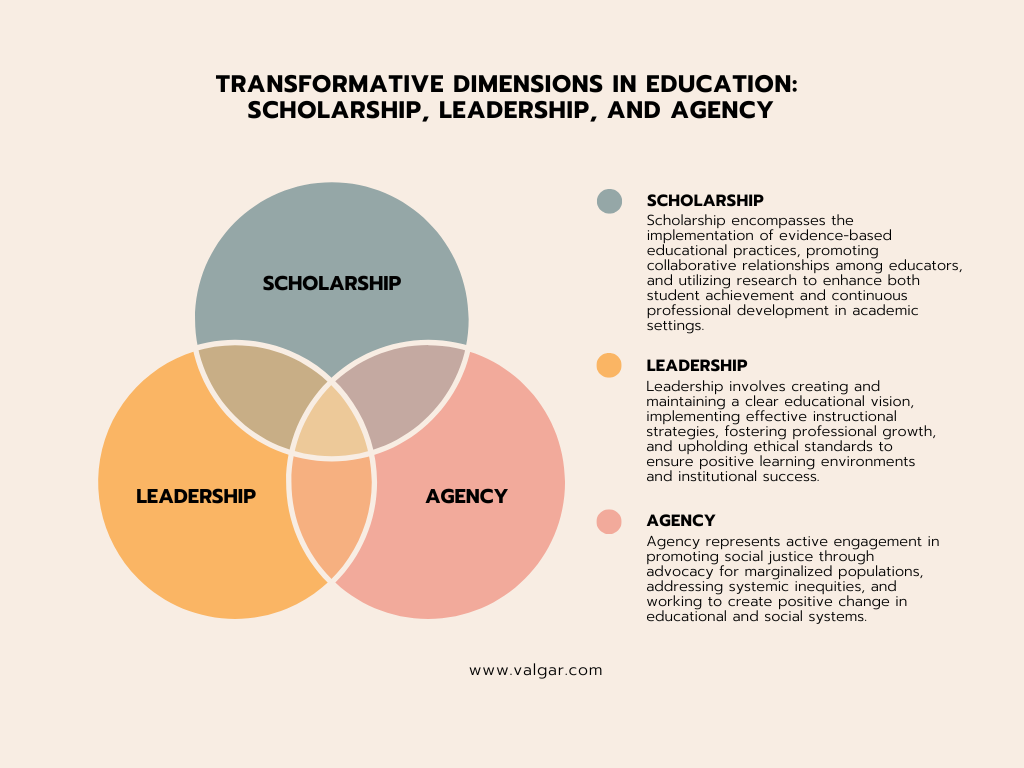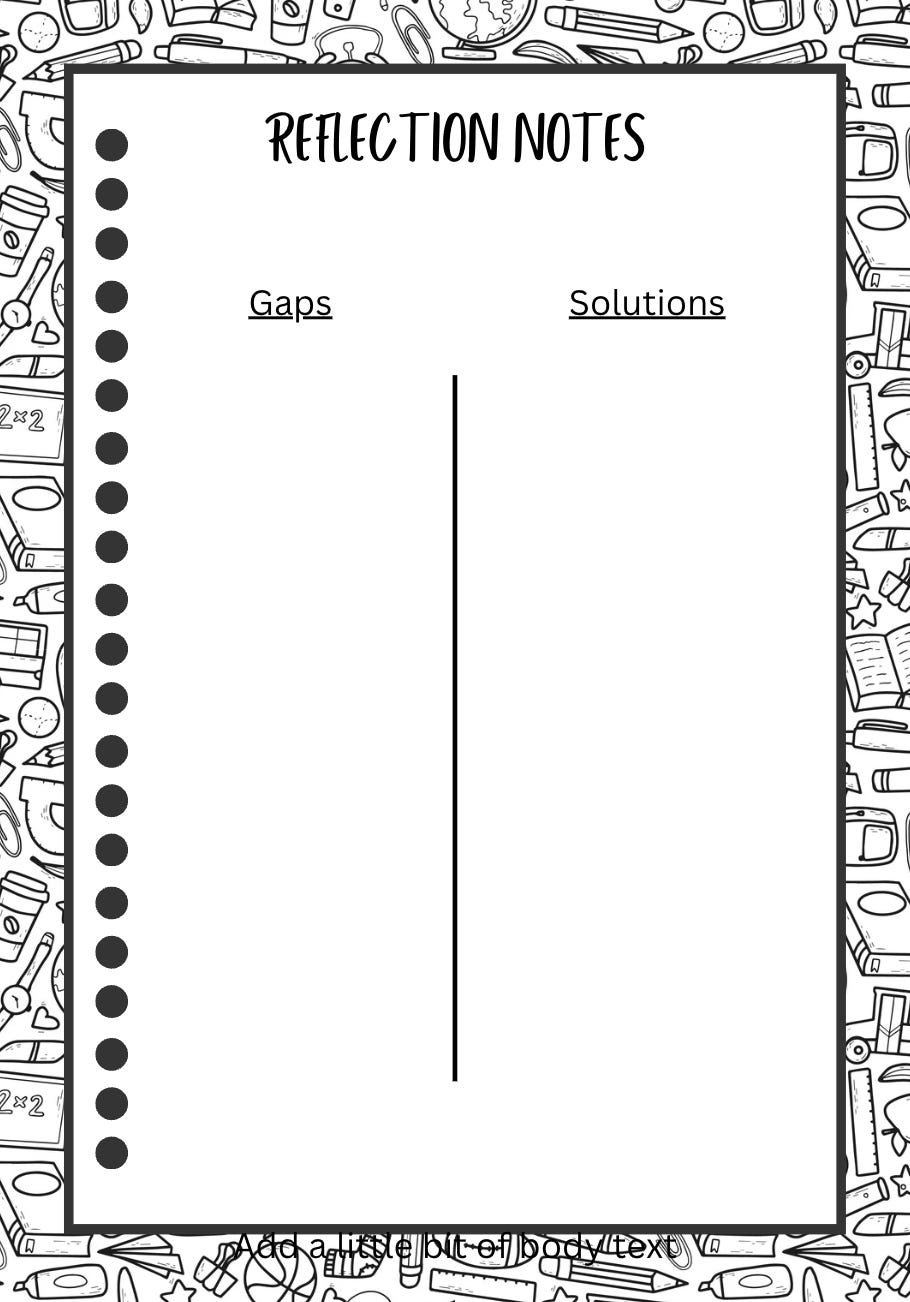Last week, I talked about mindset and the impact of mindset in focusing on your edupreneurial journey. In this week's newsletter edition, I'd like to discuss turning educational ideas into real solutions that help people learn better. When I first started creating learning tools, I thought perfect features were everything. But working with edupreneurs and educational leaders taught me something valuable - it's all about staying open to growth and change.
In determining my edurepeneurial path, I analyzed educational ventures and the individuals who created them. Among the many lessons, one stood out - the best edupreneurial solutions emerge from real-world problems that need solving. Before deciding on the niche I would fill, I spent time reflecting on gaps I observed and those I worked to fill during my 35 years in education. I listed my experiences consulting with school districts and county offices and executive coaching experiences with school district leaders.
The time spent reflecting and learning compelled me to establish Valgar LLC. My extensive work with school districts and county offices illuminated three critical pillars at the core of my career: scholarship, leadership, and agency. These foundational elements repeatedly emerged as areas to leverage in improving education through executive coaching sessions with district leaders and consulting with organizations.
I coupled my learning with a list of interests I would like to integrate, including writing and publishing, building online communities, establishing a hub for edupreneurs, and relaunching my podcasts. Finally, I added serving on both profit and non-profit boards to my list.
Market research isn't just corporate jargon - it's about understanding who you're helping and what they need. Take a look around your community. What educational challenges do you notice? Are students struggling with specific subjects, or do professionals want to learn new skills but lack time? You can identify these gaps through surveys, focus groups, or simply observe the daily challenges people face in their learning journeys.
The education space is evolving rapidly, but the basic principles remain: identify real needs, start small, listen to your users, and keep improving.
Chances are you've encountered Duolingo, which started as a small and simple idea to make language learning more accessible. What made Duolingo click with millions of users? They spotted a gap: Traditional language learning was often dull and expensive. Their solution? Break down lessons into fun, bite-sized chunks and make them free.
Here's a practical exercise you can do: grab a notebook and write down three educational gaps you've noticed in your workspace. These gaps could be anything from "high school students need better ways to prepare for college interviews" to "working parents want to learn coding but can't attend regular classes."
In 2004, Sal Khan's cousin Nadia called him about a math problem. Living in different cities meant in-person tutoring wasn't possible, so Sal grabbed his laptop and started teaching over Yahoo's Doodle notepad. As more family members asked for help, Sal faced a time crunch between his hedge fund job and evening tutoring. His solution? Record the lessons. By 2006, he was posting simple videos on YouTube - just his voice explaining concepts while drawing on a digital notepad.
The videos revealed something surprising about how students learn. Being able to pause, rewind, and review helped concepts stick. There was no classroom pressure; just learning at their own pace. Students worldwide started sharing stories of breakthrough moments. Sal saw the impact and left his finance career to build Khan Academy. While it's grown into a massive platform with interactive tools, its heart remains the same - helping everyone learn one concept at a time.
Once you've identified a gap, it's time to create your prototype. Don't worry about perfecting it - that's not the point of a Minimum Viable Product (MVP). Focus instead on solving the core problem you've identified. If you're building a math app, start with just one type of problem. If it's a language learning tool, begin with basic vocabulary in one language.
The key is getting something basic working that you can show potential users. This is where many educational edupreneurs get stuck - trying to build everything simultaneously. Instead, think of it like cooking: you taste the sauce and adjust the seasoning as you go, rather than dumping in all the spices at once. Let's look at how this works in practice. Khan Academy started with simple blackboard-style videos explaining math concepts.
The Academy initially didn't have fancy graphics or interactive exercises—just clear explanations of challenging concepts. Students' positive responses showed they were on the right track, and they built from there. One aspect that often gets overlooked is building a community around your educational product. It isn't just about having users—it's about creating a space where learners can support each other and provide feedback.
Coursera does this well with its discussion forums, where students can help each other understand complex topics and share their learning journeys. The development process should be iterative - meaning you're constantly learning from your users and improving your product. When working with future edupreneurs, I always emphasize the power of user feedback. What features do they use? Where do they get stuck? What makes them come back for more? Their insights are invaluable for the improvement of your product.
Here's a practical tip: set up regular check-ins with a small group of early users. Their insights will be gold for improving your product. Don't just ask them what they like - watch how they use your product. Often, the most valuable feedback comes from observing what users do, not just what they say. Remember that engagement is crucial in education. Your product needs to keep learners coming back. Duolingo nailed this with their streak system and gamification elements. But engagement doesn't always mean games and points. Some products, like Khan Academy, keep users engaged through clear progress tracking and the satisfaction of mastering new concepts.
As you develop your educational product, whether a coaching strategy, a consulting plan, or a curriculum, ask yourself, "Am I making learning more accessible, engaging, or effective?" If you can answer yes to any of these questions, you're on the right track. The education space is evolving rapidly, but the basic principles remain: identify real needs, start small, listen to your users, and keep improving. These principles will guide you toward creating something truly valuable for learners.
Remember, some of the most impactful educational solutions started with someone just trying to solve a simple problem. What educational challenge will you tackle first?
Reflection Questions
What educational gaps have you noticed in your local community that align with your expertise?
How can your unique skills and experiences contribute to solving an educational challenge?
What feedback methods would work best to understand your target learners' needs?
How might you test your educational solution on a small scale before full implementation?
What resources and support would you need to realize your educational idea?
Tasks
List three educational problems you've personally encountered or observed in your community
Create a simple prototype of your educational solution (could be a video, worksheet, or basic app interface)
Interview five potential users about their learning challenges and document their responses
Sketch out a basic implementation plan for your educational solution, including the timeline and resources needed
Design a quick feedback form to gather input on your prototype from test users
The Pulse
Trump Is Putting K-12 ‘On Notice.’ 3 Steps for Education Companies to Weather Rapid Change.
Whether serving as a consultant, coach, or developer, it will be important to be clear on the expectations, opportunities, and limitations in the product or service you will provide. Read More
Resources
As an edupreneur, it is important to use productivity tools, as they are key to simplifying, optimizing, and enhancing efficiency in completing many of your daily tasks. These tools are designed to help you manage your time, organize information, and streamline workflows, ultimately enabling you to accomplish more in less time. Such platforms include Evernote, Trello, Microsoft OneNote, Notion, and Apple Notes. Each one is unique and will require you to spend time getting to know each one.








